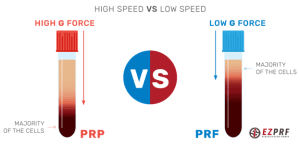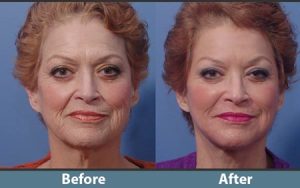Understanding the Difference between PRP and PRF in Facial Rejuvenation
Understanding the Difference between PRP and PRF in Facial Rejuvenation
Facial rejuvenation has become a popular cosmetic procedure in recent years. With the development of technology, new methods have emerged to help patients achieve younger-looking skin. Platelet-rich plasma (PRP) and platelet-rich fibrin (PRF) are two such methods used for skin care treatments. Although both PRP and PRF are derived from the patient’s blood, they have some differences that set them apart. This blog post aims to explain those differences and help you make an informed decision about which option is right for you.
Platelet-rich plasma (PRP) therapy involves drawing blood from the patient’s arm and processing it to extract the platelets. These platelets are activated to release growth factors that encourage tissue healing. The resulting concentrate is then injected into the patient’s face. This process is said to stimulate collagen production, leading to better skin tone and texture. PRP therapy is used for several cosmetic treatments, including hair restoration, facial rejuvenation, and wrinkle reduction.
Platelet-rich fibrin (PRF) is a relatively new development in skin care treatments. Like PRP, PRF is derived from the patient’s blood and comprises a high concentration of platelets. However, PRF is denser and contains a fibrin matrix – a web of proteins that helps to hold the platelets together. This matrix has been found to protect the growth factors from degradation, which means the effects of the treatment can last longer than PRP. PRF can be used for several treatments, including bone grafting, wound healing, and facial rejuvenation.
The main difference between PRP and PRF is in their concentration and consistency. PRP has a lower concentration of growth factors, while PRF has a higher concentration. PRF is also denser and more concentrated than PRP, which makes it more effective in skin care treatments. However, both PRP and PRF have their advantages, and your choice will depend on your specific needs.
Another difference between PRP and PRF is the number of treatments required. Since PRP has a lower concentration of growth factors, patients may need to undergo several treatments to achieve the desired results. On the other hand, PRF is more effective and may only require one treatment to achieve the same results.
In summary, PRP and PRF are two innovative methods used for facial rejuvenation. While both are derived from the patient’s blood and contain high concentrations of growth factors, PRF is denser and more concentrated. PRP has a lower concentration of growth factors and may require several treatments to achieve the desired results. PRF, on the other hand, is more effective and may only require one treatment. Ultimately, your choice will depend on your specific needs and the advice of your cosmetic surgeon. Regardless of which option you choose, make sure to choose a reputable and experienced practitioner to ensure your safety and satisfaction.





